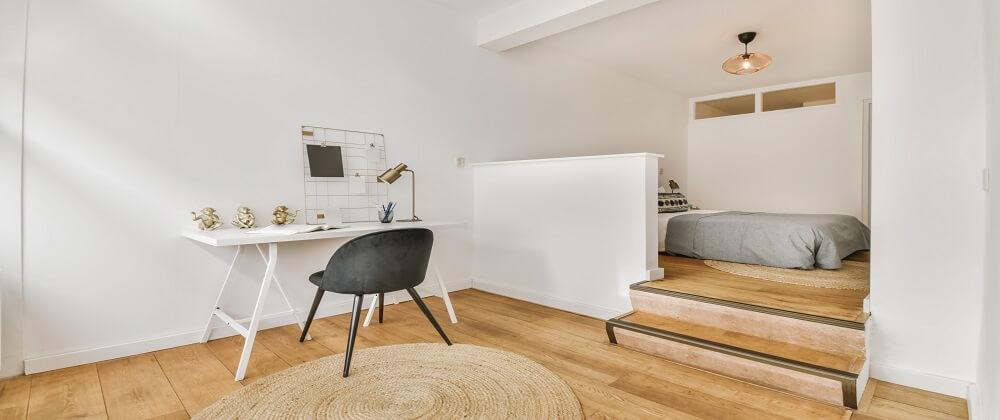
Micro Apartment – Things You Must Know About
By: ROS Team
Urbanization has made people move into cities that have more financial opportunities and better living options. As a result, there are more people moving into cities than there is capacity. The price of real estate in cities continues to increase as the demand for space increases. To address the issue, real estate developers have come up with the idea of building apartments that cover less space and are more economical than traditional apartments.
1- What Is a Micro Apartment
2- Why Live In Micro Apartment
3- Pros of Micro Apartments
4- Cons of Micro Apartments
5- How Much Does It Cost
However, micro apartments are not everyone’s cup of tea and many might not find converting to a minimalist lifestyle comfortable.
What Is a Micro Apartment?
Micro apartments are smaller, compact versions of studio apartments. All essential amenities such as kitchen, bathroom, and living space are provided in an area between 300 and 400 square feet. Apartments are designed for a single occupant.

Why Live In A Micro Apartment?
You might be bothered by the micro apartment’s available square footage, but this is the best feature. Apartments are optimized to use every square inch of space available for living. Tall windows and high ceilings add ventilation and create the appearance of a larger space while foldable chairs and bedroom furniture make it possible to maximize the living space when needed.
Micro apartments are conducive to privacy since having a roommate isn’t feasible. In addition, communal spaces like gyms and pools help offset the small living environment.

Pros of Micro Apartments
- Smaller spaces mean developers can put more units in a building, thus increasing their profit potential.
- Landlords also see more profit per square foot with micro apartments than with conventional apartments.
- The popularity and demand for apartments mean fewer prolonged vacancies between tenants.
- Such as, Micro apartments are much more affordable than studio apartments, which makes them appealing to potential tenants.
- Microapartments are usually found in the middle of major metropolitan areas, which is often a draw for tenants who want to relocate to the city.
Cons of Micro Apartments
- The operational and maintenance costs of micro apartments, including utilities, are higher because there are more units in a smaller space.
- Micro apartments don’t appeal to a wide spectrum of the population due to their smaller size.
- Micro apartment homes typically see high turnover since they are usually treated as starter homes. Tenants who occupy them soon move on to more spacious apartments.
- Furnished microapartments are expensive because they often include specialized furniture designed to optimize the apartment’s available space.

Having said all that, it is always better to ask people who live in micro apartments how their experience has been before making a move. Sometimes it comes down to personal experience, but hearing a testimonial or two may help in deciding whether or not you should move to a micro apartment. This would be especially helpful if you’re able to speak with someone who lives in the same building where you intend to rent a micro apartment since you could then weigh the pros and cons pertaining to that building’s units.
If you don’t personally know anyone in the building, consider asking the building’s property manager if there are any tenants who would be willing to talk to you about their experience living there. Or you can ask your close friends and family members who are living or have lived in apartments about their experience.
How Much Do Micro Apartments Cost?
On average, micro apartment renters pay 15% to 25% less in rent than tenants in standard apartments. However, bear in mind that won’t always be the case. Rent depends on location, and most apartments are located in commercial hubs of the city where the rent is traditionally more expensive.
The higher price can also be justified due to the added benefits of living in a micro apartment. Such as living in close proximity to subway stations, grocery stores, or popular dining locations. The location and access to extra amenities like fitness centers and a roof deck may be enough to offset the reduced square footage and higher rent.

Some General Tips To Take Maximum Advantage Of Microapartments
- Consider investing in multi-functional furniture such as coffee tables that turn into desks or couches that turn into beds. Don’t let the furniture’s price become a factor since you are buying it for a micro apartment.
- Try to paint the walls with neutral or light colors since they make the room look spacious.
- Make the best use of storage space wherever you can find it. Buy a loft bed so you can use the space underneath it for storage. If storage is still a challenge, rent a storage unit.
- If you have already decided to live a minimalist life, then consider donating or selling your extra luggage. Try to bring in less stuff than you actually need to live comfortably.
Conclusion:
If you’re on the fence about moving to a micro apartment, we suggest that you weigh the pros and cons and evaluate them against your preferences. Even if you move into micro apartments and realize you don’t like it. The great thing about renting is you always have the option to move out. If you find micro apartment living isn’t for you, you can make a move once your lease is up.








